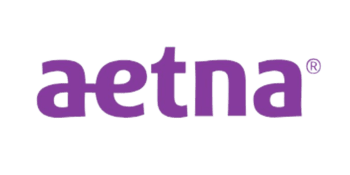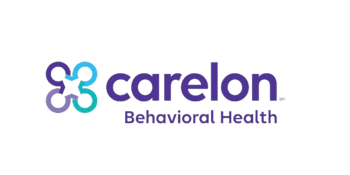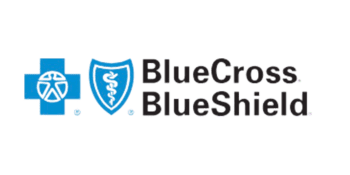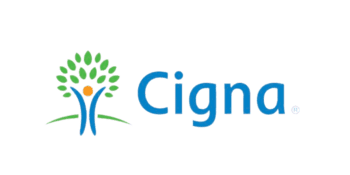Online Trichotillomania Hair-Pulling Disorder Treatment for Teens in Texas
According to research highlighted by the National Institutes of Health, trichotillomania, also known as compulsive hair-pulling—has a lifetime prevalence as high as 3.5%. At BasePoint Academy, we’re here seven days a week to support teens through challenges like trichotillomania and OCD tendencies.
Our online trichotillomania treatment for teens in Dallas, Texas, manages the powerful urges and intrusive thoughts that come with it. If you’re searching for honest answers about how to stop trichotillomania from taking over your child’s life, you’re in the right place. Our team of adolescent mental health specialists uses proven therapeutic strategies to address trichotillomania and eradicate repetitive hair-pulling. What is trichotillomania? This page answers that question while providing detailed information on the various trichotillomania therapies for teens. It also highlights how our digital mental health services can help your child find relief.
What Is Trichotillomania Disorder?
Trichotillomania is a mental health condition where a person feels an intense, often uncontrollable, urge to pull out their own hair. It’s more than just a bad habit—it’s a real disorder that can cause significant distress. These hair-pulling and anxiety-related behaviors can seriously impact daily life when left untreated.
Trichotillomania falls under a group of conditions known as Body-Focused Repetitive Behaviors (BFRB). People who struggle with BFRBs often use repetitive actions, like scalp-picking and hair-pulling, to cope with overwhelming emotions or intrusive thoughts. While it can feel isolating, your teen is not alone—and with the proper support, managing trichotillomania urges and finding healthier ways to respond to stress is possible for your child.
Insurance Coverage for Teen Online Trichotillomania Disorder Treatment
A complimentary assessment with one of our licensed clinicians will recommend a virtual trichotillomania disorder treatment plan for your teen with mental health challenges. We can also check your insurance coverage levels.
Call us today to schedule a complimentary same-day assessment at (972) 357-1749 or complete our inquiry form.
Teen Virtual Trichotillomania Disorder Treatment Admissions
What Are the Signs and Symptoms of Teen Trichotillomania Hair-Pulling Disorder?
If you’re worried that your child might be struggling with trichotillomania, you’re not alone—and spotting the signs early can make a world of difference. Trichotillomania in children often shows up through obsessive hair-pulling behaviors that aren’t just occasional habits. These urges can take over their daily life, leading to emotional struggles and visible signs that are hard to miss.
Some common signs include recurrent, irresistible urges to pull out hair from the scalp, eyebrows, eyelashes, or other body parts. You might notice hair loss due to trichotillomania, like bald patches, thinning brows, or missing eyelashes. Your child may also feel a build-up of tension or anxiety before pulling, followed by a brief sense of relief or even satisfaction afterward. Despite wanting to stop, many teenagers find it nearly impossible to break the cycle alone.
Other red flags include favoring certain types of hair to pull, engaging in rituals like inspecting or playing with the hair after pulling or even chewing it. Your child might start avoiding activities they used to enjoy or feel embarrassed about their appearance, wearing hats, makeup, or even wigs to cover up the hair loss. In many cases, the pulling happens unconsciously while watching TV, reading, or feeling bored. Even when the emotional toll is heavy—frustration, shame, isolation—the behavior often continues.
Recognizing these signs of trichotillomania in children can feel overwhelming, but early support can be truly life-changing. By understanding the patterns behind obsessive hair-pulling behaviors, you’ll be better equipped to help your child take the first brave steps toward healing, confidence, and better emotional health. If you’ve noticed any of these signs or symptoms, don’t hesitate to call BasePoint Academy today.
Statistics on Teenage Hair-Pulling Disorder for Families in Texas
Trichotillomania often begins between ages nine and 13, especially during stressful times. While younger kids might not think much about hair loss, older children and teens usually struggle with feelings of shame, low self-esteem, and even anxiety or depression. Studies show that social anxiety can predict how severe the condition becomes in adolescent girls.
Interestingly, trichotillomania isn’t more common in females. It typically involves pulling from areas like the scalp and eyebrows, with episodes lasting anywhere from minutes to hours. Although about 3.5% of people in the U.S. meet the clinical definition—visible bald spots from hair-pulling—many others live with milder forms of the disorder. While trichotillomania can worsen over time, especially when it starts young, the proper support can help many children and teens manage their symptoms and start feeling more like themselves again.
Do Texas Teen Mental Health Therapy Programs Provide Online Treatment for Trichotillomania Disorder?
Yes, many Texas programs, including those at BasePoint, provide online teenage trichotillomania hair-pulling disorder therapy. Web-based mental health support offers flexible and accessible options for your child to receive help from the comfort of home. This remote psychotherapy allows for the same personalized and private treatment experience your teen would receive in-house.
Virtual mental health care allows your child to engage with expert therapists, no matter where they are, without traveling to an in-person session. There are even trichotillomania support groups where your teen can engage in digital therapy sessions with a group of peers. This can be especially helpful when dealing with emotional regulation and trichotillomania, as your child can stay in a safe, familiar environment while receiving effective remote emotional support. Online trichotillomania therapy has become a powerful tool for teens.
These online programs are facilitated by an online therapist for trichotillomania in Texas. These specialists have the experience and understanding to address the unique needs of teens struggling with trichotillomania. They use evidence-based strategies like cognitive behavioral therapy for hair-pulling and habit reversal training, all delivered through e-therapy platforms. With the proper online treatment options, your child can gain the tools needed for managing trichotillomania urges, reducing compulsive behaviors and hair-pulling disorder symptoms, and working through the anxiety that often accompanies this condition.
Online Treatment for Trichotillomania Hair-Pulling Disorder for Teens in Texas
If your teen is struggling with trichotillomania, online treatment can be a game-changer. Whether looking for an online therapist for hair-pulling in Texas or online psychiatric help, many virtual options can offer effective support. The following list includes a few examples (not a complete list) of what online treatment for trichotillomania can look like.
Virtual PHP and Day Treatment
Virtual counseling provides consistent, supportive care for trichotillomania. Virtual PHP (Partial Hospitalization Programs) and virtual day treatment options allow your child to engage in structured therapeutic activities while still being able to rest and recharge at home. These programs offer flexibility while addressing hair-pulling behaviors and managing anxiety with the guidance of experienced professionals.
Virtual Outpatient and Evening Treatment Programs
Internet-based therapy programs are an excellent option for teens who need care but have scheduling challenges. These virtual outpatient and evening treatment programs provide a more flexible approach, allowing your child to get the support they need in the evenings or around their other commitments. These programs focus on practical techniques that help teens reduce urges and manage stress.
Virtual IOP
Online mental wellness programs like Intensive Outpatient Programs (IOPs) offer another excellent option for your teen. An IOP is ideal when your teen needs more frequent therapy but not full-time care. With a virtual IOP, your child can access structured, remote psychotherapy, build coping skills, and receive mental health support—right from home.
Teletherapy Programs
If you’re seeking a more flexible treatment option, internet therapy sessions through teletherapy programs might be ideal. These programs allow your child to meet with an online therapist for trichotillomania in Texas regularly, focusing on a personalized treatment plan that addresses hair-pulling and the anxiety often tied to it.
BasePoint Academy Accepts health Insurance
We accept most major health insurance providers in Texas and can check trichotillomania disorder treatment and counseling coverage on your behalf.
How to Find Online Trichotillomania Disorder Treatment Programs in Texas
At BasePoint Academy, we know how tough it can be to watch your teen struggle with Body-Focused Repetitive Behaviors (BFRB) like trichotillomania. That’s why we bring expert care straight to you through video conferencing therapy to deliver compassionate, specialized therapies and support for teens across Texas. If you’re ready to explore personalized online treatment, call BasePoint today.
Virtual Trichotillomania Programs Via Arlington, Texas
Arlington isn’t just famous for Six Flags Over Texas and AT&T Stadium—it’s also a place where families value strong support systems. Whether you’re right in the heart of Arlington or elsewhere, our virtual trichotillomania treatment and telehealth counseling programs offer your teen the tools they need to heal without ever having to leave home.
- BasePoint Academy- Arlington, Texas: 3900 Arlington Highlands Blvd, Suite 237, Arlington, TX 76018, United States
Virtual Trichotillomania Programs Via Forney, Texas
Known as the “Antique Capital of Texas,” Forney brings small-town charm close to the DFW Metroplex. Even if you’re living in this tight-knit community, specialized care for trichotillomania is just a click away. Our online programs use e-therapy platforms to connect your teen with a licensed online therapist for hair-pulling in Texas.
- BasePoint Academy – Forney, Texas: 713 W Broad St, Suite 200, Forney, TX 75126, United States
Virtual Trichotillomania Programs Via McKinney, Texas
McKinney’s rich history and family-focused culture make it an incredible place to grow and heal. Through our digital mental health services, your teen can engage in effective, evidence-based treatment from the comfort of home—no traffic, no waiting rooms, just real help through remote psychotherapy designed around your family’s needs.
- BasePoint Academy – McKinney, Texas: 4733 Medical Center Drive, McKinney, TX 75069, United States
Virtual Trichotillomania Programs Via Frisco, Texas
Frisco is where big dreams meet small-town warmth, with spots like The Star, Stonebriar Centre, and the beautiful Frisco Commons Park, making it an excellent place for families. If you’re raising a teen who’s struggling with obsessive hair-pulling behaviors, know that expert support through our online trichotillomania treatment is just a phone call away.
- BasePoint Academy – Frisco, Texas: 8275 Judges Way, Suite 100i, Frisco, TX 75036
Alternative Ways to Find Virtual Trichotillomania Treatment Programs in Texas
If you’ve reached out to BasePoint Academy to inquire about our online teenage trichotillomania hair-pulling disorder treatment program and determined it doesn’t align with your teen’s and family’s needs, we’re committed to helping you find one that does. Finding the right online psychiatric help for your teen’s trichotillomania begins with a few simple steps:
- Search Online: Start with a Google search and enter terms like “Online therapist for trichotillomania in Texas” or “teen virtual trichotillomania treatment near me.” Add your specific city or area to find nearby programs that serve your community.
- Ask for Referrals from a Doctor or Therapist: Your child’s primary care doctor, dermatologist, or current therapist can be a great resource. They often know specialists or virtual programs that help with obsessive hair-pulling behaviors.
- Contact Local Mental Health Clinics: Reach out to mental health clinics or psychiatric hospitals in cities like Forney, Frisco, or Arlington. Many offer virtual counseling services that include treatment for trichotillomania and other Body-Focused Repetitive Behaviors (BFRBs).
- Check with Your Health Insurance Provider: Call your insurance company to ask about in-network options for telehealth counseling or online trichotillomania treatment for teens in Dallas, Texas, and the state. It’s a simple method of finding covered support without extra guesswork.
- Call National Mental Health Helplines: Organizations like NAMI and SAMHSA’s National Helpline can connect you to virtual and local treatment programs specializing in trichotillomania and family-centered online mental wellness services.
- Explore Online Therapy Options: If you’re having trouble finding something local, don’t worry—many providers offer full telehealth counseling or video conferencing therapy. With internet-based therapy programs, your teen can receive high-quality support from the comfort of home, no matter where you are in Texas.
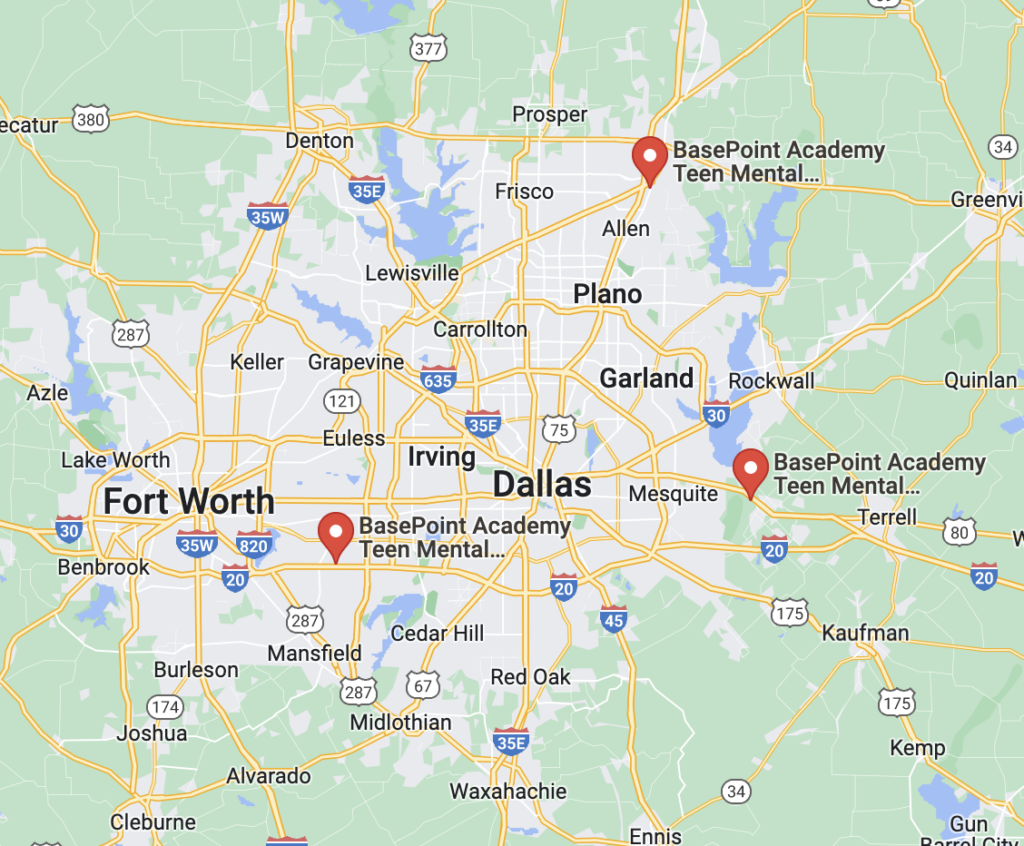
What Is the BasePoint Difference?

7am to 7pm CST
7 Days a Week
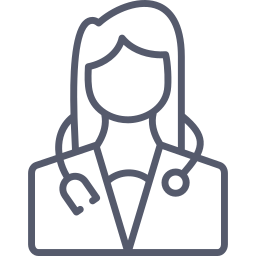
Full Time Physican
On Site

We Transport
To and From
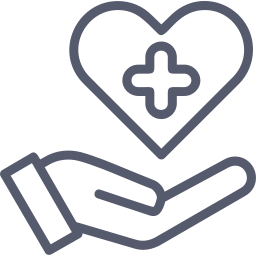
Therapy Involving
the Whole Family
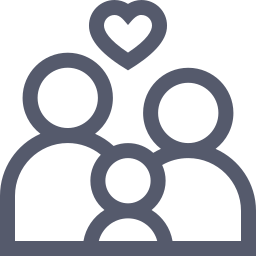
Family
Owned

What Happens at an Online Trichotillomania Treatment Program?
An online trichotillomania treatment program involves meeting with licensed therapists through secure video conferencing therapy sessions that feel as personal and supportive as an in-person program. Your teen will build skills, including coping mechanisms for managing trichotillomania urges. They’ll also work on building emotional resilience through techniques like Cognitive Behavioral Therapy (CBT), mindfulness, and Habit Reversal Training (HRT).
This web-based mental health support is crafted to be engaging, flexible, and completely centered around your teen’s needs. Whether through individual telehealth counseling, group support, or even family involvement, the goal is to create a safe space where healing feels possible and personal growth can happen, right from the comfort of your home.
Types of Virtual Counseling and Therapy for Trichotillomania Disorder in Texas
There are several types of virtual counseling and therapy options for trichotillomania disorder in Texas. Telemental health solutions offer a range of ways to connect your teen with expert care without ever leaving home. Below are a few examples of the types of e-counseling support available—this isn’t a complete list.
Online Mindfulness-Based Therapy
Helping your teen stay present can be a major part of reducing hair-pulling urges. Online mindfulness-based therapy teaches teens how to manage anxiety and intrusive thoughts by focusing on the here and now. Through breathing exercises, guided meditations, and mindful awareness techniques, your child can build stronger, calmer reactions when they feel the urge to pull.
Online Group Therapy
Sometimes, it helps to know you’re not alone—and that’s exactly what trichotillomania support groups can offer. Online group therapy connects your teen with other kids who truly understand the challenges associated with self-harm and trichotillomania. In a safe, supportive space, they can share experiences, learn from others, and build new coping strategies under the guidance of a trained therapist.
Online Individual Therapy
If your teen needs one-on-one attention, individual Internet therapy sessions are ideal. These cybertherapy sessions offer personalized support, tailored coping mechanisms, and a confidential space to dive deep into the emotions and behaviors tied to hair-pulling. Having a dedicated online therapist for trichotillomania in Texas can make a significant difference in building confidence and healthier habits.
Online Family Therapy
When trichotillomania affects one family member, it can ripple throughout the household. Online family therapy allows your family to work together toward understanding, healing, and supporting your teen. Therapists guide you in creating a home environment that promotes growth and reduces triggers tied to obsessive hair-pulling behaviors.
Online CBT
Cognitive behavioral therapy for trichotillomania is one of the most effective treatments out there. Online CBT helps your teen spot the thoughts and feelings that fuel hair-pulling urges and teaches them how to break the cycle. These telebehavioral health sessions focus on building healthier coping skills and empowering your teen to regain control.
Online Habit Reversal Training (HRT) Programs
Habit Reversal Training (HRT) is often a game-changer for teenagers struggling with compulsive hair-pulling. Online HRT programs teach your child to recognize the urge to pull and replace it with healthier, more manageable actions. Through internet-based therapy sessions, your teen can practice these techniques in real time, making it easier to build new habits.
Online DBT
Dialectical Behavior Therapy (DBT) isn’t just for big emotions; it’s also a powerful tool against obsessive behaviors like trichotillomania. Online DBT teaches your teen skills for emotional regulation, mindfulness, and distress tolerance. It helps them manage intense feelings that often lead to hair-pulling and gives them stronger tools to face everyday stressors.
Online Acceptance and Commitment Therapy (ACT)
Acceptance and Commitment Therapy (ACT) is about helping your teen live a rich, meaningful life without being trapped by hair-pulling urges. Through online ACT sessions, your child learns to accept uncomfortable thoughts and feelings without letting them take over. Instead of fighting the urge, they build the strength to move forward in the direction they truly want to go.
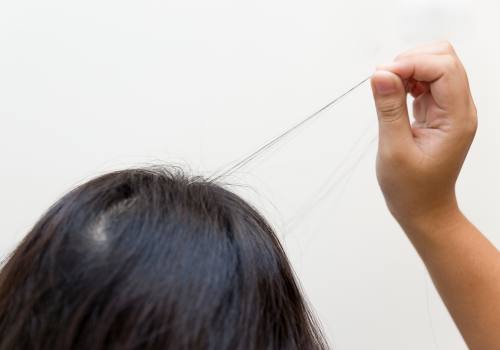
How Much Does Hair-Pulling Disorder Virtual Treatment Cost with Insurance Coverage?
The cost of hair-pulling disorder virtual treatment with insurance coverage can vary based on your specific plan, but many policies significantly lower out-of-pocket expenses. Some insurance providers cover a substantial portion of video conferencing therapy or other digital mental health services, often resulting in a copayment between $20 and $80 a session.
It’s always smart to reach out to your insurer or an online treatment provider like BasePoint to understand what’s included in your mental health benefits. Our team is happy to verify your insurance, explain the costs of virtual teen therapy, and walk you through available financial options—making the process easier and less overwhelming for you and your teen— call (972) 357-1749 today.
How Much Does Hair-Pulling Disorder Online Treatment Cost Without Insurance Support?
Without insurance, the cost of hair-pulling disorder online treatment typically ranges from around $100 to $250 per digital therapy session, depending on the provider and level of care. Programs offering more intensive virtual mental health care, like online Intensive Outpatient Programs (IOPs) or Partial Hospitalization Programs (PHPs), can incur thousands weekly.
If you’re paying privately, many online treatment centers offer flexible payment plans, sliding scale fees, or financial counseling to help make care more accessible. It’s worth having an open conversation with a virtual mental health care provider like BasePoint to discuss budget-friendly options that fit your family’s needs without sacrificing quality support.
Does Health Insurance Cover Virtual Trichotillomania Hair-Pulling Disorder Programs in Texas?
Yes, many health insurance plans help cover the cost of online teenage trichotillomania hair-pulling disorder programs in Texas. Coverage can vary depending on your specific plan, but more insurance providers recognize the importance of telepsychology and virtual mental health care.
It’s always a good idea to call your insurance company directly and ask about your benefits for digital mental health services. Some plans may fully cover certain programs, while others offer partial coverage or require a copay.
Alternatively, you can skip the long wait times and insurance jargon by calling us to speak to a friendly BasePoint representative. We can verify your benefits and walk you through the steps to start. Don’t hesitate to call or use our convenient contact form to reach out—getting clarity now can help you confidently find the proper support for your child.
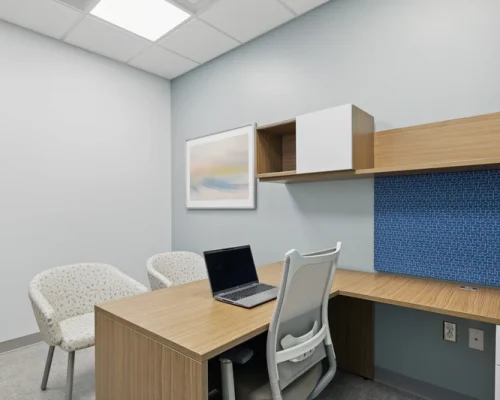
What Is the Admissions Process for Virtual Trichotillomania Treatment at BasePoint Academy?
At BasePoint Academy, we make the admissions process for virtual trichotillomania treatment as smooth and supportive as possible. We know it’s a big step, and we’re here to walk alongside you. While the details can vary depending on your teen’s unique needs, here’s a general look at what you can expect:
Initial Contact:
Your first step is contacting us—whether by phone, contact form, or email. During this initial conversation, we’ll listen carefully to what’s going on and answer any questions you have about our virtual trichotillomania therapy programs. You’ll be treated with kindness, not judgment.
Intake Assessment:
After that first connection, we’ll schedule a more in-depth intake assessment, usually done through video conferencing therapy. This allows us to better understand your teen’s needs, symptoms, and goals, all from the comfort of your home.
Evaluation and Diagnosis:
Our clinical team will then perform a thorough evaluation. This step helps us determine if there’s a formal diagnosis of trichotillomania—or any related concerns—and ensures we’re building a plan around real, specific needs.
Personalized Treatment Plan Development:
There are no cookie-cutter solutions here. After the evaluation, we’ll craft a personalized treatment plan unique to your teen. This could include a mix of individual and group support, skill-building sessions to strengthen coping skills and self-esteem, and various online trichotillomania therapies for teens.
Insurance Verification and Financial Counseling:
Our team will help you navigate the financial side, too. We’ll verify insurance benefits, explain coverage for online treatment, and walk you through all the options so there are no surprises down the road.
Admission Approval:
Once everything is squared away—from the clinical side to the insurance details—we’ll finalize your teen’s admission into the program. We ensure you and your teen feel confident and ready for the next step.
Family Orientation (if applicable):
Your family will be invited to a virtual orientation. This gives you tools, support, and guidance on being an active, positive part of your teen’s healing process.
Admittance to the Program:
With everything in place, your teen officially begins their virtual treatment journey with us. Through secure Internet therapy sessions, they’ll start connecting with their therapists, attending sessions, and working toward real progress.
Ongoing Monitoring and Adjustments:
Healing isn’t one-size-fits-all. Throughout your teen’s time with us, we’ll monitor their progress and tweak their treatment plan as needed. We stay flexible so we can meet your teen where they are—and help them move forward.
Contact The BasePoint Academy Today!
Does your teen struggle with mental health concerns? Contact BasePoint Academy to discuss a virtual trichotillomania treatment program for your teen.
Sources
- World Health Organization. (n.d.). Mental health of adolescents. World Health Organization. Retrieved from https://www.who.int/news-room/fact-sheets/detail/adolescent-mental-health on July 11, 2023
- Horowitz, J. M. (2019, February 20). Most U.S. teens see anxiety and depression as a major problem among their peers. Pew Research Center’s Social & Demographic Trends Project. Retrieved from https://www.pewresearch.org/social-trends/2019/02/20/most-u-s-teens-see-anxiety-and-depression-as-a-major-problem-among-their-peers/ on July 11, 2023
Statistics and Information on Hair-Pulling Disorder for Texas Families
- According to the American Academy of Child & Adolescent Psychiatry, trichotillomania causes are still unknown. In some children, the urge to pull hair can become very hard to manage, often intensifying during times of stress. Many young people with trichotillomania experience feelings of shame, embarrassment, or guilt about their hair loss. While younger kids might not be as aware or concerned, older children and teens often face teasing, lowered self-esteem, anxiety, or even depression because of it.
- Around five to ten million people in the United States—about 3.5% of the population—meet the clinical criteria for trichotillomania, meaning they have visible bald spots caused by hair-pulling. However, a Texas-based psychologist notes that many others experience a milder version of the disorder without meeting the full clinical criteria.
- A 2022 meta-analysis found that trichotillomania (hair-pulling disorder) is not more prevalent in females.
- According to Mental Health America, trichotillomania most often begins between the ages of nine and 13, with the highest rates of onset typically seen around 12 to 13 years old.
- A 2024 study published in European Child & Adolescent Psychiatry found that among adolescent girls diagnosed with trichotillomania, social anxiety symptoms were the strongest predictor of how severe the condition would be.
- A 2021 study featured in Psychiatry Online highlights that it’s common for people to pull hair from several areas, such as the scalp and eyebrows, with hair-pulling episodes ranging from just a few minutes to several hours.
- Research shows that trichotillomania can become more severe over time, particularly when it starts in childhood. However, studies have also found that with the proper trichotillomania treatment, many children and teens experience noticeable improvement in their hair-pulling behaviors or learn to manage them more effectively.
What Is Texas Known For?
Texas is known for its larger-than-life spirit and diverse culture. From the bustling streets of Dallas to the historic charm of San Antonio, there’s no shortage of things that make Texas stand out. Whether it’s the country music scene in Austin or the rich history in Fort Worth, this state truly offers something for everyone.
Not to mention, Texas is famous for its mouthwatering barbecue, big trucks, and the unmatched warmth of Southern hospitality. If you’re planning to explore, don’t miss iconic places like Houston, known for its thriving arts scene and space exploration history, or the scenic beauty of Big Bend National Park. The Texas Hill Country, with spots like Fredericksburg, offers stunning landscapes and a taste of German heritage, while South Padre Island provides a beachside escape. From the skyscrapers of Houston to the quiet charm of small towns like Marfa, Texas has an undeniable character you can’t find anywhere else.

